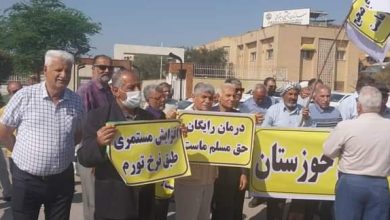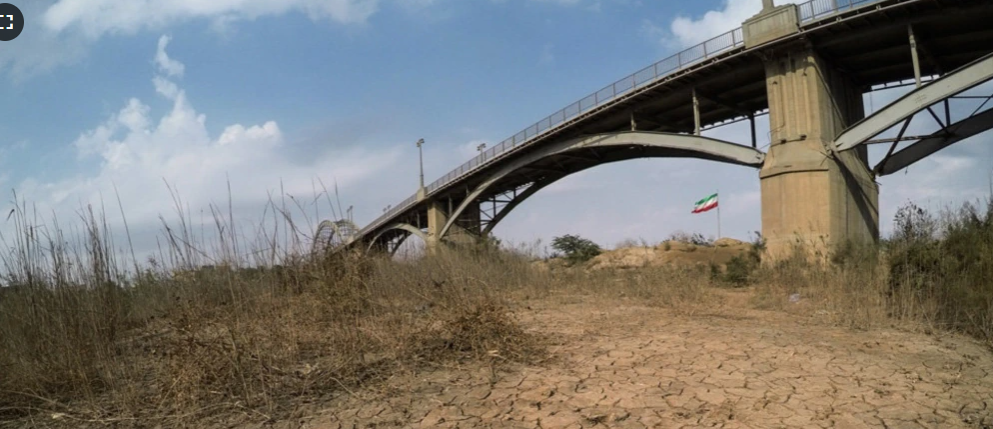
Ahwaz. a systematic Iranian policy to obliterate the Arab identity
Deliberate demographic changes taken against peoples will not be able to change the authentic identity that is united by the unity of language, religion, culture and history, and geography was torn apart by colonialism at the beginning of the twentieth century after the collapse of the Ottoman Empire. The issue of Al-Ahwaz, which was occupied by Iran during the reign of Shah Reza Pahlavi in 1925, is one of the most prominent forgotten humanitarian issues. The issue appears from time to time due to the demonstrations in which Al-Ahwaz explodes against injustice, oppression, discrimination and Iranian oppression of the Al-Ahwaz people. What is the Ahwaz issue, and what is their origin and their history and geography of the Ahwaz region??
The geographical importance of the province of Ahwaz
Ahwaz region, and Iran called it Khuzestan by order of Reza Shah, meaning the land of forts and castles. Ahwaz is located in the southwest of Iran, bordered on the west by Iraq, the Shatt al-Arab, and the Arabian Gulf, on the south by the Baluchistan region, on the north by the mountains of the Kurdistan region, and on the east and south Eastern Zagros Mountains. AL-Ahwaz is of strategic importance, as it is considered the link between Iran and the outside world, especially the Arab Gulf states, especially since there are no difficult geographical separations between it and the Arab countries. This constitutes a pressure factor on the Iranian state, and an element of strength for Al-Ahwaz. The area of the region, before Iran cut off parts of it and annexed it to some Iranian cities, amounted to about 375,000 square kilometers, but now its area is 348,000 square kilometers.
Al-Mushaasha’a Emirate
Al-Ahwaz witnessed the independence of an independent entity, the Al-Mushasha’a Emirate during the sixteenth century, and the emirate, which was also known as Arabistan, remained in existence with the change of its name to the Ka’aba State after the control of the Ka’ab family, but their rule ended in 1925 following a series of border agreements between the Persians and the Ottomans under British auspices. And Russia, where Britain abandoned the treaties it signed with the Emir of the Ahwaz state, Prince Khazal al-Kaabi, and agreed to annex Ahwaz to Iran in 1925 AD by military force in exchange for reducing Russian influence
Persian occupation knot
Before the Iranian occupation, Al-Ahwaz had a civilization and a homeland, as the roots of the Ahwaz people go back to the origins of the Arabs and their tribes, it also includes other ethnicities and the Arabs live in the middle of that region known as Al-Ahwaz. Al-Ahwaz is considered a national issue, as if it was invaded by Iran, then it demands the right to recognition as an independent state and self-determination.
Ahwaz and their Arab origins and culture
The population of Ahwaz is about 12 million people, 99% of the population was Arab, but this percentage has changed. This is due to the Iranian government’s policy of encouraging its citizens to migrate to Ahwaz and settle there, as well as the displacement of the indigenous Arabs from it. The roots of the Ahwaz people go back to many Arab tribes, including, for example but not limited to: “Bani Ka’b”, “Bani Taraf”, Khazraj, Kinana, Qawasim, Hammadi, Shammar, Anza, “Bani Tamim” and other tribes, Farsi is imposed as an official language for learning in the region. It is also noted that many Ahwaz Arabs reside outside the region, either in the Gulf states or in European countries, for political or economic reasons. Ahwazis are distinguished by their literary history and their own jurisprudential outcome. The Ahwaz literary and cultural renaissance reached its climax during the rule of Al-Mushasha’in and Al-Kaabi in the late seventeenth century, and during the eighteenth and nineteenth centuries.
Persian racist practices
Al-Ahwaz suffers from injustice, social oppression and oppression at the hands of successive Iranian governments, which consider them second-class citizens. The arbitrary measures practiced by the Iranian authorities against the Ahwaz Arab people are summarized in
- The abolition of the Arab political, administrative and judicial institutions in Al-Ahwaz, the announcement of direct military rule, and the deprivation of the simplest Political rights and freedoms that stipulate the right of the people to participate in ruling their country, either directly or through their representatives, and to carve out parts of the region and annex them to the Persian provinces, with the aim of obliterating the Arab identity.
- Iran also imposed exorbitant taxes on the people of Ahwaz and used all kinds of persecution against them, such as displacing them to Persian cities, and settling Persian families in their place after confiscating Arab land and property.
- The Ahwaz courts also prevented translation from and into the Arabic language, and confiscated all Arabic books in Al-Ahwaz, whether owned by libraries or individuals, thus preventing the teaching of the Arabic language, and in general neglecting education affairs, and the lack of health care.
- The slowdown in the reconstruction process of what was destroyed by the Iraq-Iran war, the deliberate neglect of the problem of mines left by that war, and the deprivation of the Ahwaz people from drinking water and agriculture by diverting the course of the tributaries of the Karun River towards the Persian regions such as “Isfahan”, or by seeking to implement Projects to export this water to the neighboring Gulf countries.
The Ahwaz uprising in 1979 is considered one of the uprisings that erupted throughout Iran, demanding autonomy, and the Iranian army dealt with it with the utmost repression, which led to hundreds of deaths. The Ahwaz protests demanding the right to self-determination continued, and today they have become widespread and peaceful
Displacement
The displacement of Ahwaz is one of the most prominent human rights violations by the Persian occupation. Ahwaz human rights reports revealed that the Persian occupation authorities exploited many crises, most of which are fabricated, to displace residents from their Arab areas. The Persian authorities are trying to force Ahwaz into some cities such as Mina Abbas, Abu Shahr and Kish Island, Al-Hawizeh, Busaiteen, Khafajia, Al-Rafee’ and others were estimated to leave their homes, and they were estimated by the Ahwaz human rights organizations as more than 300,000 Ahwaz citizens, and the forces of the Revolutionary Guards militia attacked the Ahwaz villages and abused their people, killing and wounding many of them after shooting them, and arresting those who rejected the policies Persian.
And in an Iranian plot against the Arab state of Al-Ahwaz, the authorities proceeded with a new administrative division in Al-Ahwaz, with the aim of separating the parts of the Al-Ahwaz homeland, as they proceeded to add Ahwaz lands to the Fars governorate to become overlooking the Arabian Gulf, under the slogan “Persia’s connection with the Gulf of Persia”, meaning the ruins The province of Fars and the Persian lands on the Arabian Gulf in dividing the Ahwaz lands, and trying to end the uprising of the Ahwaz Arab people in order to kill the dream of restoring the occupied state, with the real-world policy practiced by the racist occupation.
The occupation authorities also transformed a land full of forests, rivers and lakes in the occupied Ahwaz into dry land in order to transfer more Persian settlers to these areas, and during the previous four decades, the occupation forced no less than half a million Ahwazis to flee their lands, as a result of the drying policy of the Persian occupation.
Attempts to obliterate the Arab identity
The Iranian occupation is trying to obliterate the Arab identity of Al-Ahwaz, these schemes that failed to resist the Al-Ahwaz people and defend their cultural identity, by removing the monuments of ancient civilizations in Al-Ahwaz and destroying its Arab features, in an attempt to erase the history of Al-Ahwaz, as well as looting antiquities. 495 artifacts belonging to an archaeological excavation gang in the Ramez area in the occupied Ahwaz, in a new situation that reveals the occupation’s targeting of the history and antiquities of Ahwaz. Commenting on the demands of non-Persian peoples to study the mother tongue to preserve the national identity of these peoples, Dr. Aref Al-Kaabi, Chairman of the Executive Committee of the State of Ahwaz, told Sky News Arabia that more than half of the population of the so-called Iran is deprived of their mother tongue (Arabic – Turkish – Kurdish – Baluchi, and others), pointing out that there are 12 million Arabs who are deprived of their mother tongue, the Arabic language, which is the fifth language in the world.
Al-Kaabi added that Tehran deliberately teaches the children of non-Persian peoples to take tests in Farsi for admission to schools, pointing out that 40% of Ahwazis do not know Farsi, because their language at home is Arabic, and it is repeated in one way or another in Kurdish areas. Baluchi and Azeri. Over the past years, the Iranian government has implemented a “Persian Language Teaching” program whereby children are enrolled in schools in areas where their mother tongue is not Persian to pass a Persian language proficiency test. Al-Kaabi added that the Persian regime violates international conventions and resolutions in teaching the mother tongue in the regions of non-Persian peoples, and the “UNESCO” resolution that calls for the preservation of the mother tongue, pointing out that Tehran’s ban on teaching Arabic in Ahwaz contravenes international resolutions and covenants. Al-Kaabi stressed that speaking in the mother tongue in government departments and the street constitutes a crime punishable by law, and there are hundreds of activists defending the mother tongue of non-Persian nationalities facing arrest and execution, pointing out that Ahwazis are prohibited from speaking Arabic in government departments in Ahwaz, calling on the international community By putting pressure on the Iranian regime to teach the mother tongue of non-Persian peoples in the schools of their regions. The Chairman of the Executive Committee of the State of Al-Ahwaz explained that prohibiting the teaching of the Arabic language is not only a violation of international covenants and laws, but also adopts a project to desecrate Al-Ahwaz and change its Arab identity.
Ahwaz activists also launched an expanded electronic campaign to teach Arabic in Ahwaz schools under the title “Studying in the mother tongue is my right.”




